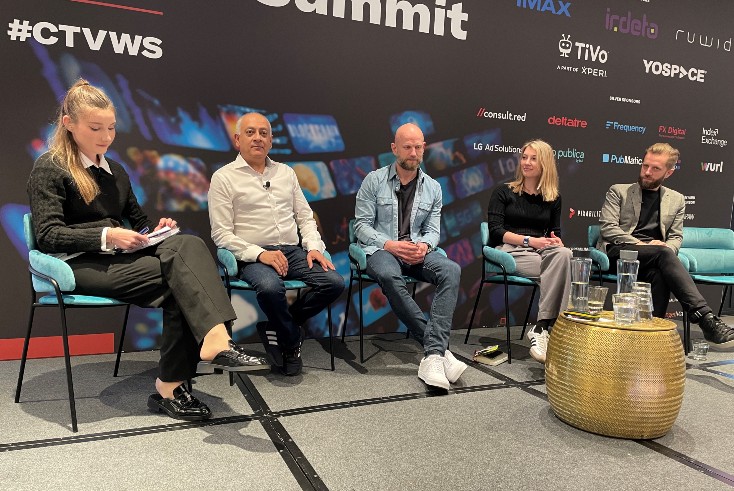Can young audiences be recaptured by broadcast from social video?

Connected TV World Summit 2024
“I will say, I don’t watch linear television. I don’t have any linear television. It’s only streaming or YouTube, TikTok and Instagram. It is something that is just a big generational divide.”
That was from Rebecca Jackson, marketing and business development officer at Caretta Research, who was hosting a panel at the 2024 Connected TV World Summit. Earlier in the day, a presentation by Wavemaker’s chief strategy and planning officer, Elliott Millard, and head of channel planning, Emma Moorhead, had discussed how video viewership had become fractured by demographic.
“Video, and the very concept of video, is becoming kind of blurry,” Millard said. “Channel 4 is essentially trying to become a bit more like YouTube. At the same time, YouTube is trying to get a bit more like TikTok.”
He explained that audience overlap on video is becoming narrower. In 2015, if advertisers bought an all-ads campaign (ie. not just TV), the overlap between 16-34s and audiences over 65 was 58%. But, said Millard, that has now decayed to just 7%.
“We cannot rely on just using broadcast channels [any more],” he continued. “We need to think very differently about the people we are reaching and where we reach those people. That is particularly happening in video, where the delta between how 16-24 audiences behave and how 65-plus audiences behave are completely different.”
Appetite for longer form
Acknowledging her comments might be unpopular to a crowd of TV and TV-tech professionals, Jackson pressed her panellists on how broadcasters and advertisers should seek to attract valuable younger audiences who spend less time watching TV.
Flora Williams, head of planning at Manning Gottlieb OMD, cited YouGov survey statistics showing that while just 4% of people don’t watch TV at all, 12% of 18-24s say they don’t. And for live TV specifically, a quarter of 18-24s never tune in. “It’s all streaming,” said Williams.
“We have to be very conscious of being consumer-first, ultimately. The younger audience wants shorter content and they want engaging content, but I do think they will ultimately convert to longer form,” she continued, elaborating that young people still watch films and binge TV series.
“There’s still appetite for longer form, it’s just about getting in there and converting them, and I think that social media is a great way to do that.”
Broadcasters have in recent years begun producing short-form content on YouTube and TikTok. The strategy, according to Matthew Godsmark, head of product propositions at Sky Media, is to advertise the longer-form (live or streaming) content by producing unique content on social platforms that resonates with younger people. The hope is that a young viewer might see something they like and want to tune in to the longer-format production.
“Where we’ve taken that big shift in digital in the last couple of years is editing more specific content created for social platforms,” he explained. “So what you see on the big screen is different to what you see on YouTube is different to what you see on TikTok. And our TikTok partnership is driving massive volume to Sky Sports. But it is different [content].”
Rather than clipping parts of a Premier League broadcast coverage, for example, Sky will produce behind-the-scenes videos for TikTok that are more authentic-feeling and offer a glimpse behind the curtain of presenters’ interactions with players.
James Cornish, senior vice-president, international sales and partnerships, at Vevo, added: “You have to take the content to [young] people in the places that they occupy. Being open to that strategy and recognising the shift in how people get access to the things that they love and want to watch is the way to start reclaiming and building back and connecting with those audiences.”
Decline in attention spans
Hitesh Bhatt, senior director, CTV and OTT, EMEA, at PubMatic, was less enthusiastic about the embrace of short-form content by broadcasters, advertisers and audiences. He said he forbids his children from using TikTok “because in my head it ruins their attention span”.
He joked, though, that his own low-attention infinite scroll is flicking through linear channels on the TV guide, implying a decline in attention spans is perhaps multi-generational, even if the pace is accelerated for Gen Z.
Whereas the panel broadly agreed on the principle of meeting audiences where they are, Bhatt suggested that doing so should come with some caveats for users and advertisers.
“I think the content is obviously important, but the ad experience also comes into that,” he said. “If you look at ads on traditional TV, the ad break appears in a way that is quite natural and the producers of the content know there’s an ad break here. If you look at some of the social video platforms, you’re watching content and an ad appears.
“I don’t think that’s a great user experience at all and I don’t think that benefits the advertiser.”




